Snakes have long been associated with a lack of legs. In fact, that’s one of the major ways that scientists identify snakes today! Still, there is a lot of mystery around the origins of snakes and just what caused them to lose their limbs. In recent research, there has been a lot of information coming out about snakes and when they had legs! Today, we are going to explore some of the science behind snakes, their legs, and some really strange and in-between creatures that don’t quite fit our current mold. Let’s meet the snake with legs and learn how it’s different from a lizard!
The ancient snake with legs
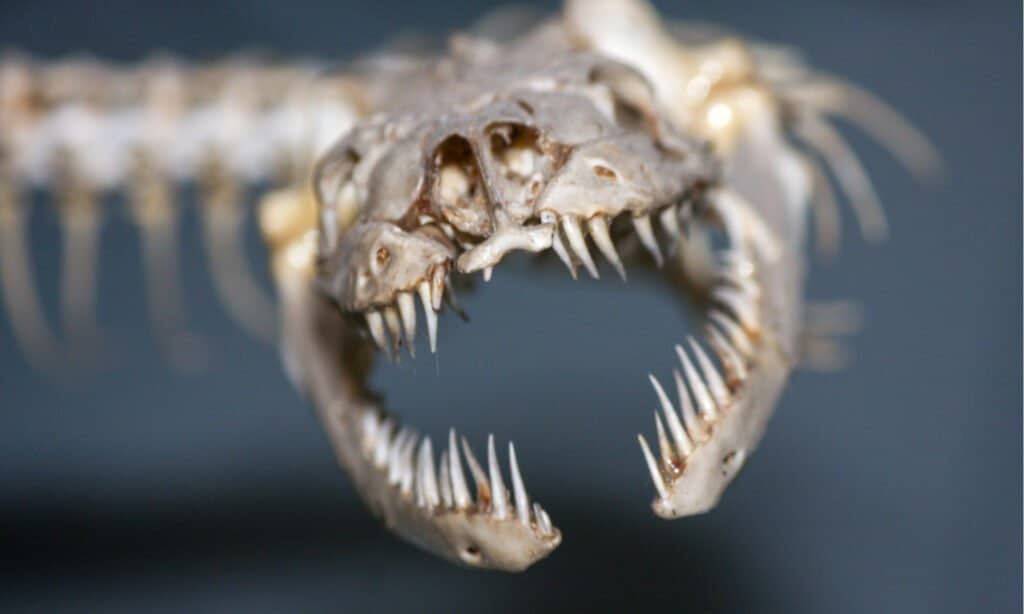
A recent fossil discovery had an incredible influence on how scientists understand ancient snakes and their legs.
©gabor_szikora/Shutterstock.com
Snakes have been around in their familiar form for about 100 million years. From then on, there have been a few identifying factors that humans have used to help categorize them into their respective taxonomical sections (scientific categories). Recently, however, scientific findings have allowed us to peer into the past and see some ancient individuals. In some of these fossils, the snakes still had their legs!
During a dig in the La Buitrera Paleontological Area within Argentina’s Río Negro province, a fossil site was found that contained multiple fossils of ancient snakes. The fossils were from around 95 million years ago and show us some incredible changes that were taking place among the reptiles of the time.
Within that fossil, site was one particular specimen, a species of the snake now named Nagash rionegrina (the Hebrew word for snake). What made Nagash so interesting to scientists was that it was the first example of a terrestrial snake species that had robust hind legs. Before this find, only older and aquatic-dwelling specimens had been found with hind legs.
How did Nagash rionegrina shake up modern snake theories?
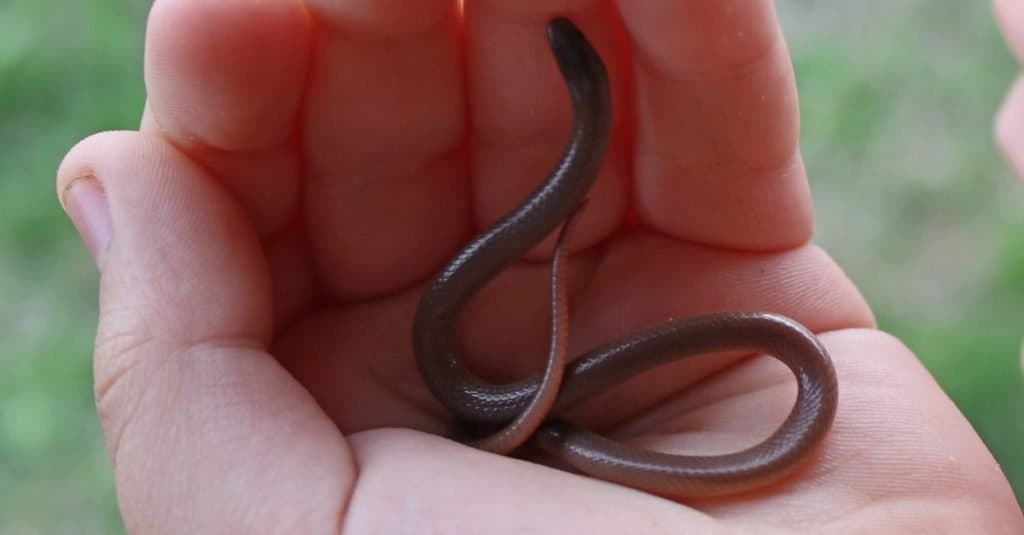
Many theories held that small burrowing
lizards
were the ancestors of modern snakes.
©Creeping Things/Shutterstock.com
Although Nagash rionegrina has allowed scientists to look millions of years into the past, the full picture still isn’t clear. Still, it gave us some vital information; namely, it crushed the previously held theory of the origin of modern snake species.
Before Nagash rionegrina, one of the most commonly held theories was that snakes evolved from blind, burrowing lizards that lived hundreds of millions of years ago. Slowly, they lost their legs and developed into what we understand today as modern snakes. The most primitive examples of these “burrowing snakes” are similar to the ones alive today from the scolecophidian order. (See picture above!)
The snakes found at the dig site, however, didn’t resemble small, burrowing ancestors at all. Instead, they had large skulls, sharp teeth, and large bodies, meaning that the ancient ancestors weren’t small burrowing lizards at all.
“Our findings support the idea that the ancestors of modern snakes were big-bodied and big-mouthed—instead of small burrowing forms as previously thought,”
Fernando Garberoglio
Why did snakes lose their legs?
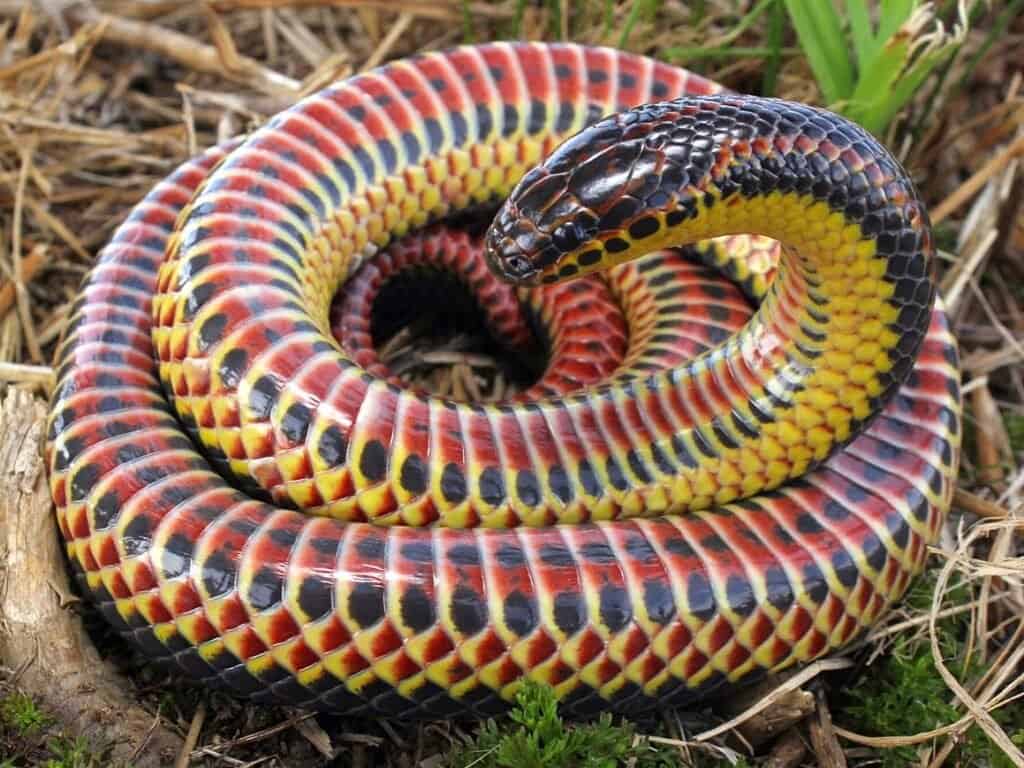
Snakes lost their legs from the combined evolutionary pressures of swimming and hunting in burrows.
©Charles Baker / CC BY-SA 4.0 – License
With our understanding of ancient snakes broadened, the ancient history of snakes has become a bit clearer. Still, there are some areas that are currently unknown. One of the most nagging questions scientists face is exactly why snakes lost their legs. Thanks to the fossil dig site, we know where they came from (large-bodied lizards similar to modern-day komodo dragons), but why did they lose their legs?
The current theories hold that two main evolutionary pressures are responsible for the lack of legs in modern-day snakes. The first pressure was the increased hunting ability that a legless snake would have. Even today, many snakes hunt in burrows and small, confined areas. For a snake hunting small creatures that hide in burrows and tight areas, having total mobility in those areas would have been a massive hunting advantage. Over time, evolutionary pressure allowed these highly mobile and flexible reptiles to edge out the less mobile ones with legs.
The second pressure is in regard to swimming. Ancient ancestors to snakes spent a lot of time in aquatic environments, with many species today continuing in the same vein. Legs aren’t particularly useful in the water, especially when a long, lithe body is better suited for speed and maneuverability in the water.
While this is likely only a part of the answer, these two selection pressures most likely contributed to how snakes lost their legs.
Do any snakes today have legs?

Some python and boa species have small leg remnants that aren’t used for much today.
©Michelle Marks/Shutterstock.com
There are thousands of species of snakes and lizards across the earth. Within that range, are there any snakes alive today that have legs? Well, in short, no. Snakes lost functional legs millions of years ago, likely around the time that our fossil friend Nagash rionegrina was roaming the earth.
Still, there are some species of snake that have remnants of legs, even to this day. Most notably, pythons and boas. In most python and boa species, there are vestigial organs that are clearly the ancient remains of legs, right near the bottom of their bodies. These “legs” aren’t used for much else besides giving some extra “grip” when they are mating.
What Prehistoric Snake Had Four Legs?
Scientists say the “four-legged snake” is a unique ancient creature that lived on planet Earth millions of years ago. This is suggested by researchers who are believed to have found what they expressed was the first-ever fossil of a snake with four legs in Brazil. This fossil, named Tetrapodophis amplectus, was quite small, roughly the size of a pencil, and had tiny limbs.
Interestingly enough, ancient texts such as the Bible imply that there were snakes with legs. In fact, there is a quote from the book of Genesis, specifically in Genesis 3:14 that Biblical scholars believe suggests that in ancient times there were snakes with legs:
“You will crawl on your belly and eat dirt all the days of your life.” God in the story tells the serpent. This statement suggests that the creature may have had legs prior.
What kinds of legless lizards are there?
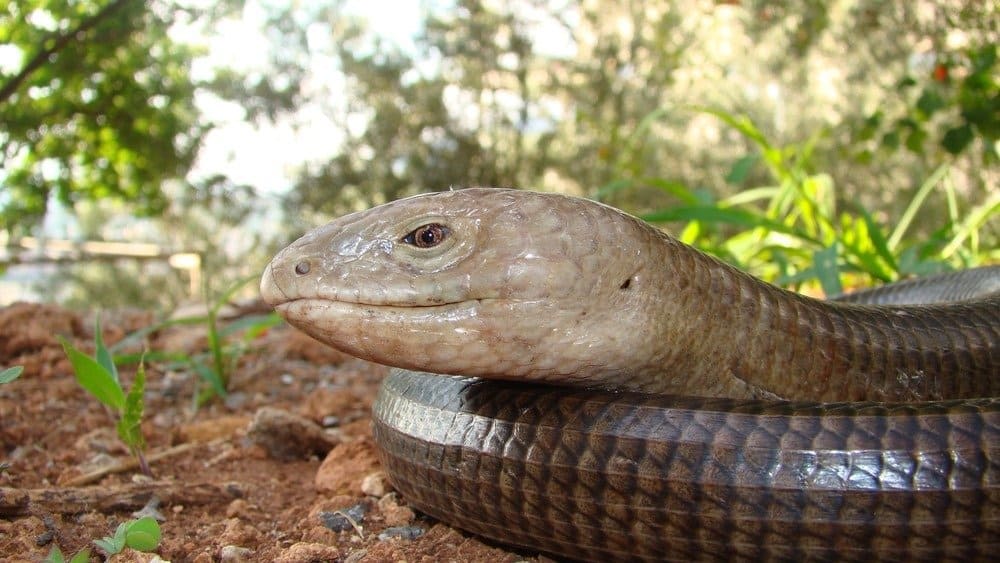
There are many
species of legless lizards
that are distinctly separate from snakes.
©Dr.MYM/Shutterstock.com
Although there aren’t any modern-day snakes with legs, there are a few species of lizards that don’t have any legs. Currently, there are 8 families of legless lizards, each with dozens of their own species (with some having over 1,500). They live in Eurasia, Southern Europe, North America, Australia, and Africa.
One of the most famous groups of legless lizards is Scincidae, otherwise known as skinks. There are 1,500 species of skinks, many of which have no limbs at all.
These groups of limbless lizards show how evolution isn’t a single change from one species to another, but a slow and gradual creep, often with the previous species still around!
What is the difference between a legless lizard and a snake?
Although it may not look like it, legless lizards and snakes are different groups of animals. Here are some of the primary factors that help scientists classify them separately. Legless lizards usually have:
- vestigial limbs
- eyelids
- external ears or earholes
- lack of broad belly scales
- notched tongues (as opposed to snakes’ forked tongues)
- long tails (where snakes have short tails and long bodies)
Comparing Skinks to Other Lizards
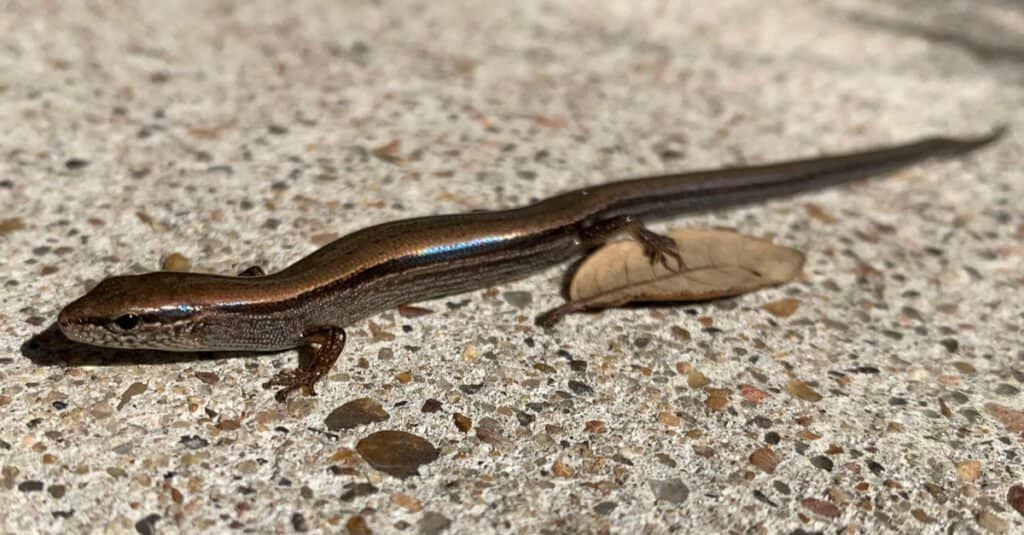
The Brown skink has short legs, no neck, and slick-looking skin. Its tail and body are more snake-like.
©Stock Anole/Shutterstock.com
Have you ever observed the difference between the cute little green lizards and the brown or blackish skinks in your garden? The skinks are definitely more skittish and snake-like! Their legs are shorter, they have no necks and just look more like snakes! Unlike snakes, they can dart around at up to 60 mph – so those little legs do come in handy!
Other lizards, like the green anole, are curious and somewhat friendly. They may check you out and wait until they feel threatened before they scuttle away. They may not be as fast as their skink cousins – but their climbing abilities may be superior. Are lizards like green anoles more evolved than their skink relatives? Evolution of species takes a lot of time – and this may be an opportunity to see two sub-species evolving at their own pace in your backyard!
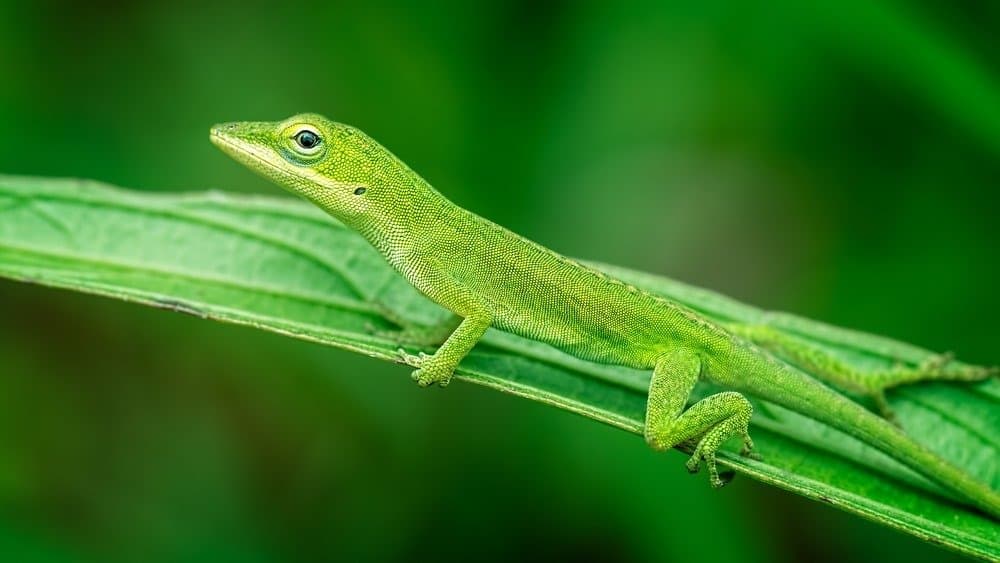
Green Anoles look more lizard-like with long legs and toes, distinct necks and scaley skin.
©Brad Boland/Shutterstock.com
The photo featured at the top of this post is ©
Discover the "Monster" Snake 5X Bigger than an Anaconda
Every day A-Z Animals sends out some of the most incredible facts in the world from our free newsletter. Want to discover the 10 most beautiful snakes in the world, a "snake island" where you're never more than 3 feet from danger, or a "monster" snake 5X larger than an anaconda? Then sign up right now and you'll start receiving our daily newsletter absolutely free.
Thank you for reading! Have some feedback for us? Contact the AZ Animals editorial team.






